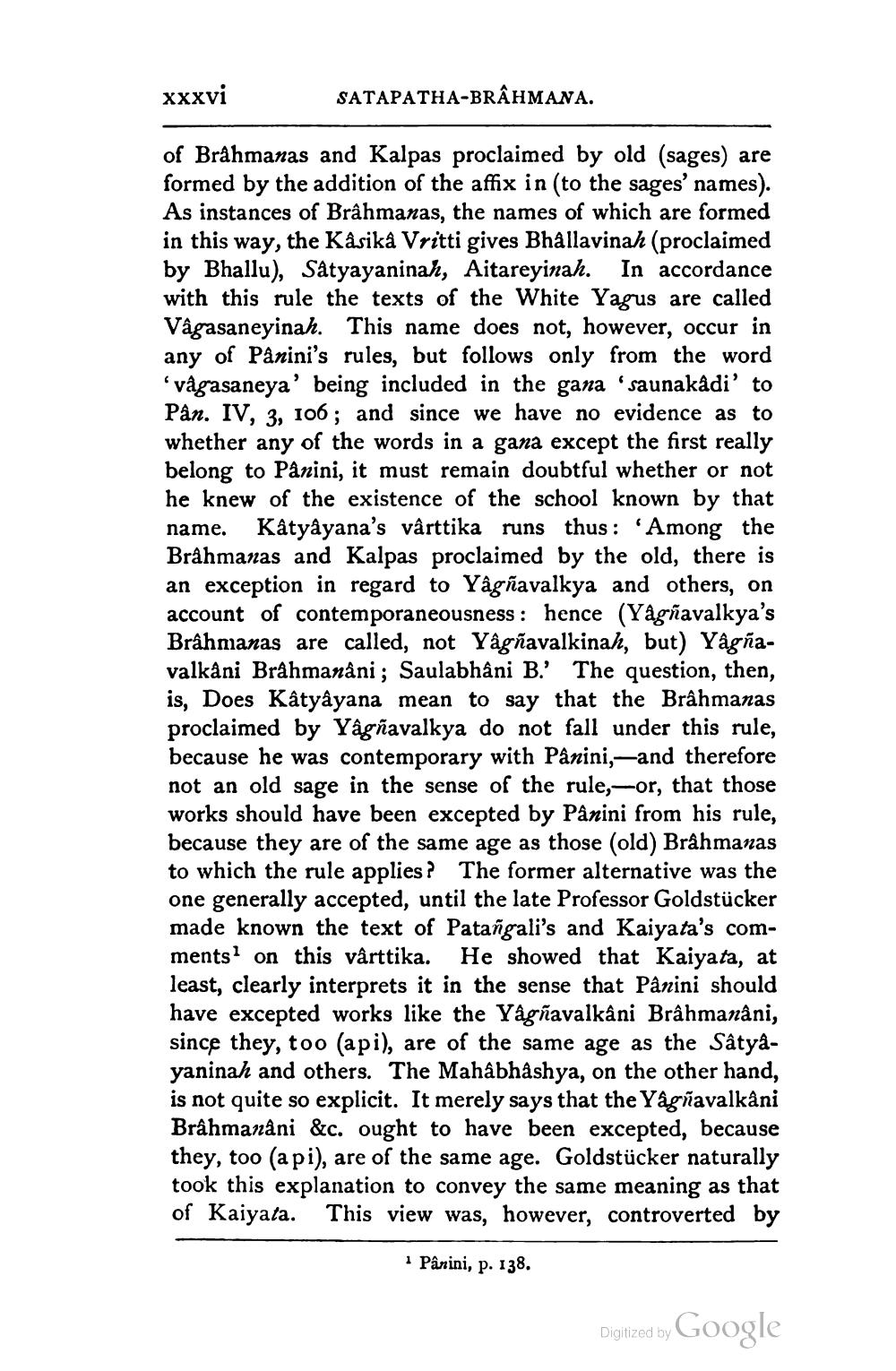________________
Xxxvi
SATAPATHA-BRAHMANA.
of Brahmanas and Kalpas proclaimed by old (sages) are formed by the addition of the affix in (to the sages' names). As instances of Brâhmanas, the names of which are formed in this way, the Kåsika Vritti gives Bhallavinah (proclaimed by Bhallu), Satyayaninah, Aitareyinah. In accordance with this rule the texts of the White Yagus are called Vâgasaneyinah. This name does not, however, occur in any of Panini's rules, but follows only from the word 'vågasaneya' being included in the gana 'saunakâdi' to Pån. IV, 3, 106; and since we have no evidence as to whether any of the words in a gana except the first really belong to Panini, it must remain doubtful whether or not he knew of the existence of the school known by that name. Katyayana's vârttika runs thus: 'Among the Bråhmanas and Kalpas proclaimed by the old, there is an exception in regard to Yâgñavalkya and others, on account of contemporaneousness: hence (Yagnavalkya's Brâhmanas are called, not Yâgñavalkinah, but) Yâgñavalkáni Brahmanani ; Saulabhâni B.' The question, then, is, Does Kâtyâyana mean to say that the Brâhmanas proclaimed by Yâgñavalkya do not fall under this rule, because he was contemporary with Panini,—and therefore not an old sage in the sense of the rule, or, that those works should have been excepted by Panini from his rule, because they are of the same age as those (old) Brâhmanas to which the rule applies? The former alternative was the one generally accepted, until the late Professor Goldstücker made known the text of Patañgali's and Kaiyata's comments on this vårttika. He showed that Kaiyata, at least, clearly interprets it in the sense that Panini should have excepted works like the Yågnavalkâni Brâhmanâni, since they, too (api), are of the same age as the Satyayaninah and others. The Mahâbhâshya, on the other hand, is not quite so explicit. It merely says that the Yágñavalkâni Brâhmanani &c. ought to have been excepted, because they, too (a pi), are of the same age. Goldstücker naturally took this explanation to convey the same meaning as that of Kaiyata. This view was, however, controverted by
· Panini, p. 138.
Diglized by Google




